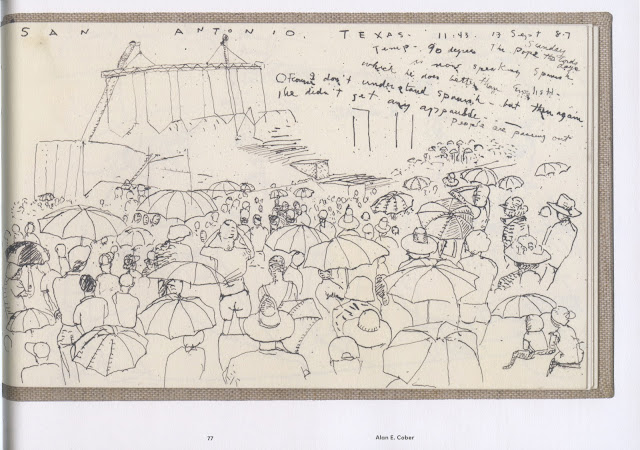A major new exhibit of the work of Burt Silverman has just opened at the Salmagundi Club in Manhattan. The exhibit-- a feast for the mind and the eye-- contains 35 significant paintings.
For many years, Silverman has been one of the premier painters in America. He's from that generation of thoughtful painters who used realism as a vehicle for reflection and discovery. The result, on display in the exhibition, is rich with nuance and heavy with nutritional content.
 |
| All paintings in this review copyright Burton Silverman |
A good example is this 1994 watercolor, The Machine:
Most of this painting is as loose and abstract as any Mark Rothko or Jackson Pollock painting:
Here, design reigns supreme. These areas aren't governed by objective external references.
But in key places Silverman sharpens his focus and paints solid objects realistically. He uses folds on clothing, treads on tires and similar hard edged details to create a composition which rescues the abstract elements from a fugue state.
These touches keep the picture in an objective, three dimensional reality.
The theme of this picture-- humans wrestling with machines-- is as current as this morning's headlines about coping with the complexities of artificial intelligence. Other paintings in the exhibition invite the same kind of reflection on other themes.
Silverman's brand of realism is very different from much of the realist revival of the past 20 years, which often exalts technical skill and soulless photo-realism. The abstract designs inherent in Silverman's painting remind us of the importance of aesthetic values neglected by so many technicians in the "realist revival." More importantly, Silverman finds in the material world themes worthy of contemplation and extrapolation. Their messages aren't obvious; Silverman doesn't offer us diagrams or roadmaps. He's far too oblique for that. This brand of realism takes time to unfold.
For those who claim that realism is "dated" in the fast moving art world of AI, conceptual art, NFTs and indigenous futurity, the only anachronism in Silverman's art is its emphasis on humanity and depth-- important attributes that are rarely to be found in much of the contemporary art scene.
















































